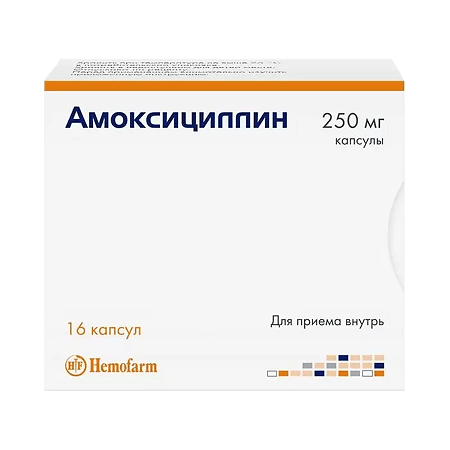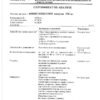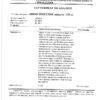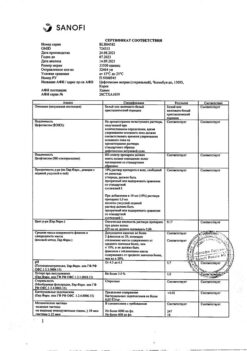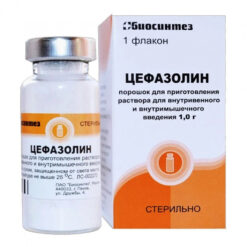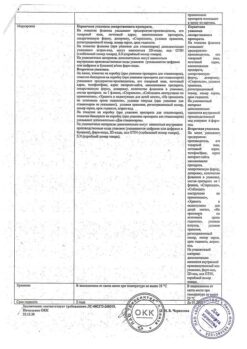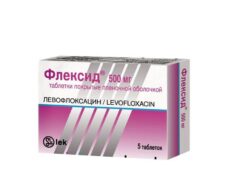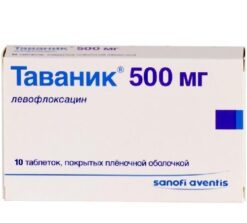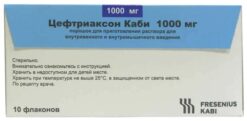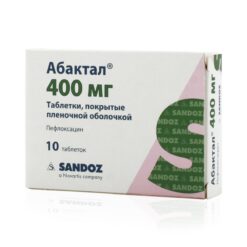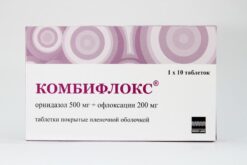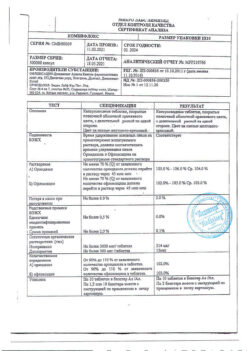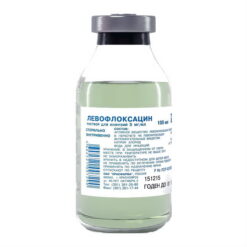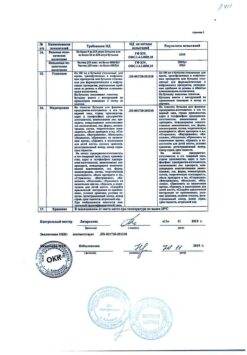No products in the cart.
Amoxicillin, 250 mg capsules 16 pcs
€2.16 €1.96
Out of stock
(E-mail when Stock is available)
Description
Amoxicillin is an antibacterial bactericidal acid-resistant broad-spectrum agent of the group of semisynthetic penicillins.
Inhibits transpeptidase, disrupts the synthesis of peptidoglycan (a supporting protein of the cell wall) during division and growth, causes lysis of bacteria.
The drug is active against both Gram-positive and Gram-negative microorganisms due to its wide spectrum of action.
The clinically relevant gram-negative microorganisms sensitive to amoxicillin include Escherichia coli, Proteus mirabilis, Salmonella, Shigella, Campilobacter, Haemophilus influenzae, Bordetella pertussis, Leptospira, Chlamydia.
In addition, amoxicillin is active against all microorganisms sensitive to penicillin G, such as Streptococcus group A,B,C,G,H,I,M, Streptococcus pneumoniae, staphylococci and Neisseria spp, not
Penicillinase-producing, Erysipelothrix rhysiopathiae, Corynebacterium, Bacillus anthracis, Actinomycetes, Streptobacilli, Spirillium minus, Pastereulla multocida, Listeria, Spirochaeta (Leptospira, Treponema, Borrelia) and others.
as well as various anaerobic microorganisms (including peptococci, peptostreptococci, clostridia and fusobacteria).
Pharmacokinetics
Absorption is fast, high (93%), food intake has no effect on absorption, it is not destroyed in the acidic environment of the stomach.
In oral doses of 125 and 250 mg, the maximum concentration is 1.5-3 mcg/ml and 3.5-5 mcg/ml, respectively.
The action develops 15-30 min after administration and lasts 8 h. Time of reaching maximum concentration after oral administration is 1-2 hours.
It has a large volume of distribution – high concentrations are found in plasma, sputum, bronchial secretion (poor distribution in purulent bronchial secretion), pleural and peritoneal fluid, urine,
content of skin blisters, lung tissue, intestinal mucosa, female reproductive organs, prostate, middle ear fluid, bone, adipose tissue, gallbladder (with normal liver function), fetal tissues.
If the dose is increased by a factor of 2, the concentration also increases by a factor of 2. The concentration in bile exceeds the concentration in plasma by 2-4 times.
In the amniotic fluid and umbilical cord vessels, the concentration of amoxicillin is 25-30% of the level in the plasma of the pregnant woman.
Poorly penetrates the blood-brain barrier; in inflammation of the cerebral membranes (meningitis), the concentration in the cerebrospinal fluid is about 20%. Binding with plasma proteins is 17%.
Partially metabolized to form inactive metabolites. Elimination half-life is 1-1.5 hours.
It is eliminated 50-70% unchanged by kidneys through tubular (80%) and glomerular filtration (20%), liver – 10-20%.
In a small amount is excreted with breast milk. In patients with impaired renal function (creatinine clearance less than or equal to 15 ml/min) the half-life is prolonged up to 8.5 hours.
Amoxicillin is eliminated by hemodialysis.
Indications
Indications
Infectious and inflammatory diseases caused by microorganisms sensitive to amoxicillin:
– upper respiratory tract infections (tonsillopharyngitis, sinusitis, acute otitis media);
– lower respiratory tract infections (acute bacterial bronchitis, exacerbation of chronic bronchitis, community-acquired pneumonia);
– infections of the genitourinary system (pyelonephritis, pyelitis, cystitis, urethritis, endometritis, cervicitis, gonorrhea);
– abdominal infections (cholangitis, cholecystitis);
– eradication of Helicobacter pylori in patients with duodenal or gastric ulcer (always in combination with other drugs);
– infections of the skin and soft tissues (erysipelas, impetigo, secondary infected dermatoses);
– leptospirosis, listeriosis;
– Lyme disease;
– infections of the gastrointestinal tract (enterocolitis, typhoid fever, dysentery, salmonellosis (caused by Salmonella typhi, sensitive to ampicillin), salmonella carriage;
– prevention of bacterial endocarditis during surgical procedures in the oral cavity and upper respiratory tract.
Pharmacological effect
Pharmacological effect
Amoxicillin is a broad-spectrum antibacterial, acid-resistant, bactericidal agent from the group of semisynthetic penicillins.
Inhibits transpeptidase, disrupts the synthesis of peptidoglycan (supporting protein of the cell wall) during division and growth, and causes lysis of bacteria.
Due to the breadth of the spectrum of action, the drug is active against both gram-positive and gram-negative microorganisms.
Clinically significant gram-negative microorganisms sensitive to amoxicillin include Escherichia coli, Proteus mirabilis, Salmonella, Shigella, Campilobacter, Haemophilus influenzae, Bordetella pertussis, Leptospira, Chlamydia.
In addition, amoxicillin is active against all microorganisms sensitive to penicillin G, for example, group A, B, C, G, H, I, M streptococci, Streptococcus pneumoniae, staphylococci and Neisseria spp., not
producing penicillinase, Erysipelothrix rhysiopathiae, Corynebacterium, Bacillus anthracis, Actinomycetes, Streptobacilli, Spirillium minus, Pastereulla multocida, Listeria, Spirochaeta (Leptospira, Treponema, Borrelia) and others,
as well as various anaerobic microorganisms (including peptococci, peptostreptococci, clostridia and fusobacteria).
Pharmacokinetics
Absorption – fast, high (93%), food intake does not affect absorption, is not destroyed in the acidic environment of the stomach.
When taken orally at a dose of 125 and 250 mg, the maximum concentration is 1.5-3 mcg/ml and 3.5-5 mcg/ml, respectively.
The effect develops 15-30 minutes after application and lasts 8 hours. The time to reach maximum concentration after oral administration is 1-2 hours.
It has a large volume of distribution – high concentrations are found in plasma, sputum, bronchial secretions (in purulent bronchial secretions the distribution is weak), pleural and peritoneal fluid, urine,
contents of skin blisters, lung tissue, intestinal mucosa, female genital organs, prostate gland, middle ear fluid, bone, adipose tissue, gall bladder (with normal liver function), fetal tissue.
When the dose is doubled, the concentration also doubles. The concentration in bile exceeds the concentration in plasma by 2-4 times.
In the amniotic fluid and umbilical cord vessels, the concentration of amoxicillin is 25-30% of the level in the plasma of a pregnant woman.
It penetrates the blood-brain barrier poorly; in case of inflammation of the meninges (meningitis), the concentration in the cerebrospinal fluid is about 20%. Communication with plasma proteins – 17%.
Partially metabolized to form inactive metabolites. The half-life is 1-1.5 hours.
It is excreted 50-70% unchanged by the kidneys by tubular excretion (80%) and glomerular filtration (20%), by the liver – 10-20%.
A small amount is excreted in breast milk. If renal function is impaired (creatinine clearance less than or equal to 15 ml/min), the half-life increases to 8.5 hours.
Amoxicillin is removed by hemodialysis.
Special instructions
Special instructions
Before starting amoxicillin therapy, the patient should be interviewed in detail regarding previous hypersensitivity reactions to penicillins, cephalosporins and other beta-lactams.
In patients who are hypersensitive to penicillins, cross-allergic reactions with cephalosporin antibiotics are possible.
Serious and sometimes fatal hypersensitivity reactions (including anaphylactoid and severe cutaneous adverse reactions) have been reported in patients receiving penicillin therapy. The development of these reactions is more likely in individuals with a history of hypersensitivity to penicillin and in individuals with atopy. If an allergic reaction occurs, discontinue amoxicillin therapy and institute appropriate alternative therapy.
Rare cases of hypersensitivity reaction of the allergic acute coronary syndrome type (Kounis syndrome) have been observed; if it develops, appropriate treatment is used during treatment with amoxicillin.
During treatment, it is necessary to monitor the state of function of the hematopoietic organs, liver and kidneys. Increased activity of liver enzymes and changes in the number of blood cells were reported.
With long-term use, cases of superinfection and candidiasis (especially vulvovaginal candidiasis) may develop.
When taking almost all antibacterial drugs, it is possible to develop antibiotic-associated colitis up to a life-threatening condition. This should be taken into account when diarrhea occurs and during or after antibiotic therapy. If antibiotic-associated colitis develops, drug therapy should be stopped immediately and the attending physician should be consulted to prescribe appropriate treatment. The use of drugs that inhibit intestinal motility is contraindicated.
The occurrence of generalized erythema with fever accompanied by pustules at the beginning of treatment may be a symptom of acute generalized exanthematous pustulosis (AGEP). This ADR requires discontinuation of treatment with amoxicillin and is a contraindication for its further use in any situation.
The use of amoxicillin should be avoided if a patient is suspected of developing infectious mononucleosis, since the appearance of a morbilliform rash has been associated with the use of amoxicillin in the treatment of infectious mononucleosis. The Jarisch-Herxheimer reaction has been observed following the use of amoxicillin in patients with Lyme disease. Its direct cause is the bactericidal activity of amoxicillin against the bacteria that cause Lyme disease, the spirochete Borrelia burgdorferi. Patients should be reassured that this reaction is a common and usually self-limiting consequence of antibiotic use in patients with Lyme disease. Treatment must continue for 48–72 hours after the disappearance of clinical signs of the disease.
Convulsions may occur in patients with impaired renal function or in patients receiving high doses of the drug or with predisposing factors (for example, a history of seizures, treatment for epilepsy, or meningitis). In case of renal failure, it is necessary to adjust the dosage regimen depending on the degree of renal failure.
In patients with reduced diuresis, crystalluria was very rarely observed, mainly during parenteral therapy. When using high doses of amoxicillin, it is recommended to maintain adequate fluid intake and diuresis to reduce the possibility of crystalluria associated with amoxicillin use. In patients with a catheterized bladder, catheter patency should be checked regularly.
There is a possibility that increased concentrations of amoxicillin in serum and urine may influence the results of some laboratory tests. When using chemical methods, high concentrations of amoxicillin in the urine may cause false-positive test results.
To determine the presence of glucose in urine during treatment with amoxicillin, it is recommended to use enzymatic glucose oxidase methods. The use of amoxicillin may distort the results of the quantitative determination of estriol in pregnant women.
Impact on the ability to drive vehicles and machinery
There is no data on the effect of amoxicillin on the ability to drive a car or use other mechanical means.
There have been no studies on the effect of amoxicillin on the ability to drive vehicles or operate machinery. Patients should be warned about the possibility of developing allergic reactions, dizziness and seizures, which may affect the ability to drive vehicles and machinery. If the described adverse events occur, you should refrain from performing these activities.
Active ingredient
Active ingredient
Amoxicillin
Composition
Composition
Composition per tablet
Active ingredient:
Amoxicillin trihydrate (in terms of amoxicillin) – 250.0 mg.
Excipients
Potato starch – 112.6 mg, talc – 3.7 mg, magnesium stearate – 3.7 mg.
Pregnancy
Pregnancy
Results from animal studies do not indicate direct or indirect effects on reproductive toxicity. Limited data on the use of amoxicillin during human pregnancy do not indicate an increased risk of congenital malformations. The drug can be used during pregnancy only in cases where the expected benefit to the mother outweighs the potential risk to the fetus.
Amoxicillin is excreted into breast milk in small quantities; if necessary, the drug can be used during breastfeeding. A breastfed baby may develop diarrhea, sensitization and fungal infection of the mucous membranes, so it may be necessary to stop breastfeeding. Amoxicillin should be used during breastfeeding only after the attending physician has assessed the benefit/risk ratio.
Contraindications
Contraindications
– Hypersensitivity to amoxicillin, beta-lactam antibiotics (other penicillins, cephalosporins, monobactams, carbapenems) or other components of the drug;
– infectious mononucleosis, lymphocytic leukemia;
– children under 3 years of age (for this dosage form).
With caution
– Allergic reactions (including bronchial asthma, hay fever, hypersensitivity to acetylsalicylic acid) in the anamnesis;
– history of gastrointestinal tract diseases (especially colitis associated with the use of antibiotics);
– renal failure;
– pregnancy and breastfeeding period.
Side Effects
Side Effects
The most common adverse drug reactions (ADRs) are diarrhea, nausea and skin rash. Classification of adverse reactions by organs and systems, indicating the frequency of their occurrence: very often (≥1/10), often (≥1/100, <1/10), infrequently (≥1/1000, <1/100), rarely (≥1/10000, <1/1000), very rarely (<1/10000), including isolated reports, frequency unknown (frequency not can be estimated based on available data).
Infectious and parasitic diseases
Very rare: candidiasis of the skin and mucous membranes.
Blood and lymphatic system disorders
Very rare: reversible leukopenia (including neutropenia or agranulocytosis), reversible thrombocytopenia, hemolytic anemia. Increased bleeding time and prothrombin time.
Immune system disorders
Very rare: severe allergic reactions, including angioedema, anaphylaxis, serum sickness and allergic vasculitis.
Frequency unknown: Jarisch-Herxheimer reaction, allergic acute coronary syndrome (Kounis syndrome).
Nervous system disorders
Very rare: hyperkinesia, dizziness and convulsions.
Frequency unknown: aseptic meningitis.
Gastrointestinal disorders
* Common: diarrhea, nausea.
* Uncommon: vomiting.
Very rare: antibiotic-associated colitis (including pseudomembranous and hemorrhagic colitis), black “hairy” tongue.
Disorders of the liver and biliary tract
Very rare: hepatitis and cholestatic jaundice. Increased activity of aspartate aminotransferase (AST) and/or alanine aminotransferase (ALT) to a moderate degree in blood plasma.
Disorders of the skin and subcutaneous tissues
*Common: skin rash.
*Uncommon: urticaria and itching.
Very rare: skin reactions such as erythema multiforme, Stevens-Johnson syndrome, toxic epidermal necrolysis, exfoliative dermatitis, acute generalized exanthematous pustulosis (AGEP) and drug rash with eosinophilia and systemic symptoms (DRESS syndrome).
Renal and urinary system disorders
Very rare: interstitial nephritis, crystalluria.
* The incidence of these ADRs was obtained from clinical studies involving a total of approximately 6,000 adult and pediatric patients treated with amoxicillin.
Interaction
Interaction
Probenecid: the use of amoxicillin and probenecid is not recommended because probenecid reduces the renal tubular secretion of amoxicillin, thereby increasing its plasma concentration and prolonging its residence time in the blood serum.
Antacids, glucosamine, laxatives, food, aminoglycosides slow down and reduce absorption; ascorbic acid increases absorption.
Bactericidal antibiotics (including aminoglycosides, cephalosporins, cycloserine, vancomycin, rifampicin, quinolones) have a synergistic effect;
bacteriostatic drugs (macrolides, chloramphenicol, lincosamides, tetracyclines, sulfonamides) – antagonistic (the effectiveness of amoxicillin is reduced).
Increases the effectiveness of indirect anticoagulants (suppressing intestinal microflora, reduces the synthesis of vitamin K and the prothrombin index); reduces the effectiveness of estrogen-containing oral contraceptives, drugs whose metabolism produces para-aminobenzoic acid, ethinyl estradiol – the risk of breakthrough bleeding. However, the literature has described cases of increased international normalized ratio (INR) in patients receiving maintenance therapy with acenocoumarol or warfarin who are prescribed amoxicillin treatment. If concomitant use of drugs is necessary, the INR should be carefully monitored when amoxicillin is added or removed. In addition, it may be necessary to adjust the dose of oral anticoagulants.
Diuretics, allopurinol, oxyphenbutazone, phenylbutazone, non-steroidal anti-inflammatory drugs and drugs that block tubular secretion, reducing tubular secretion, increase the concentration of amoxicillin in the blood.
When used simultaneously with allopurinol, the risk of developing a skin rash increases. Reduces clearance and increases toxicity of methotrexate.
Enhances the absorption of digoxin.
During treatment with amoxicillin, false-positive Coombs test and urine glucose tests are possible.
Overdose
Overdose
Symptoms
Nausea, vomiting, diarrhea, crystalluria, water and electrolyte imbalance (as a result of vomiting and diarrhea), convulsions, agitation, confusion.
Treatment
Symptomatic – gastric lavage, activated carbon, saline laxatives, medications to maintain water and electrolyte balance, hemodialysis.
Storage conditions
Storage conditions
In a dry place, protected from light, at a temperature of 15 to 25 ° C.
Keep out of the reach of children.
Shelf life
Shelf life
3 years.
Manufacturer
Manufacturer
Hemofarm A.D., Serbia
Additional information
| Shelf life | 3 years. |
|---|---|
| Conditions of storage | In a dry, light-protected place at temperatures from 15 to 25 ° C. Keep out of reach of children. |
| Manufacturer | Chemopharm A.D., Serbia |
| Medication form | capsules |
| Brand | Chemopharm A.D. |
Other forms…
Related products
Buy Amoxicillin, 250 mg capsules 16 pcs with delivery to USA, UK, Europe and over 120 other countries.

